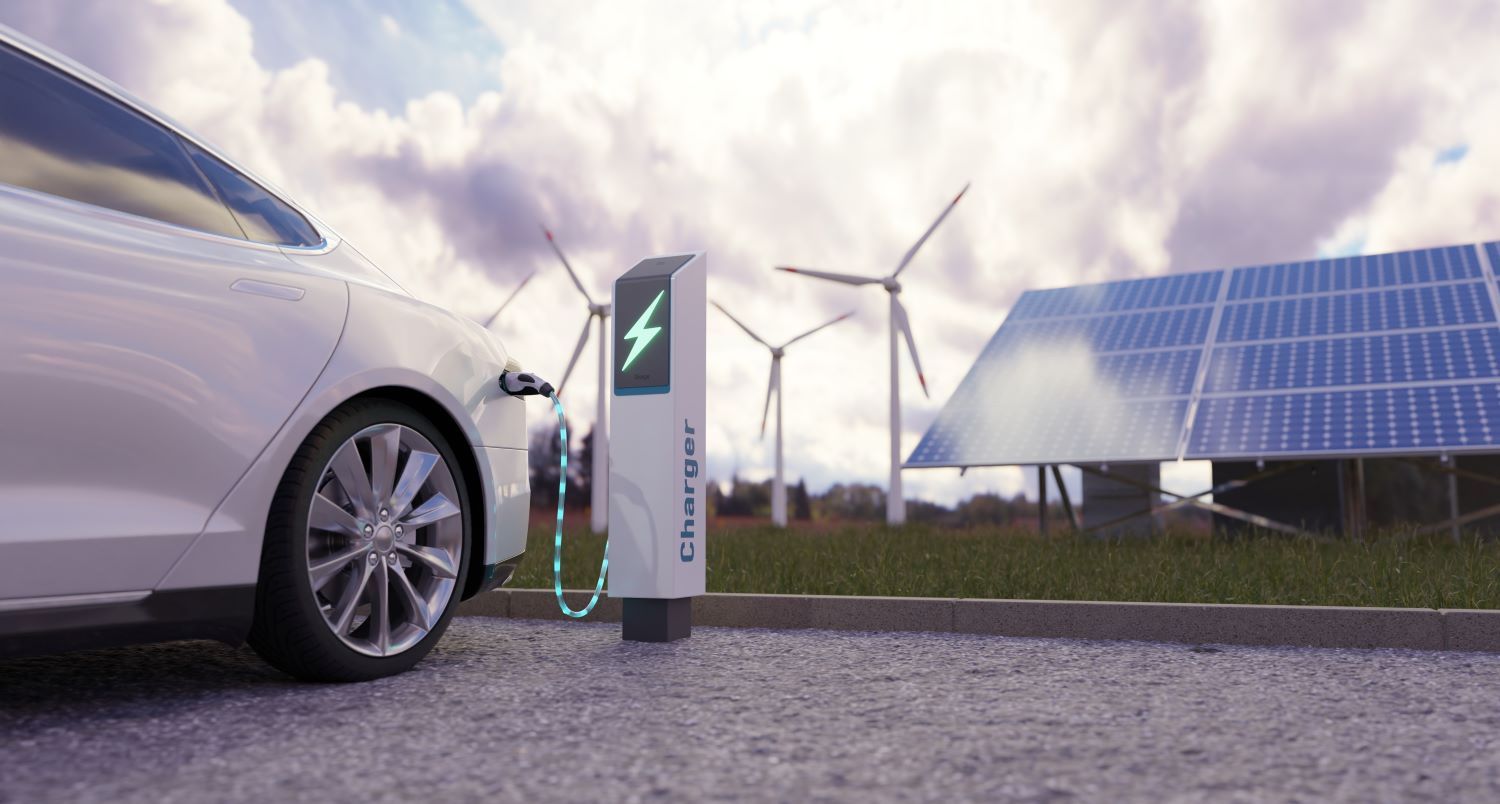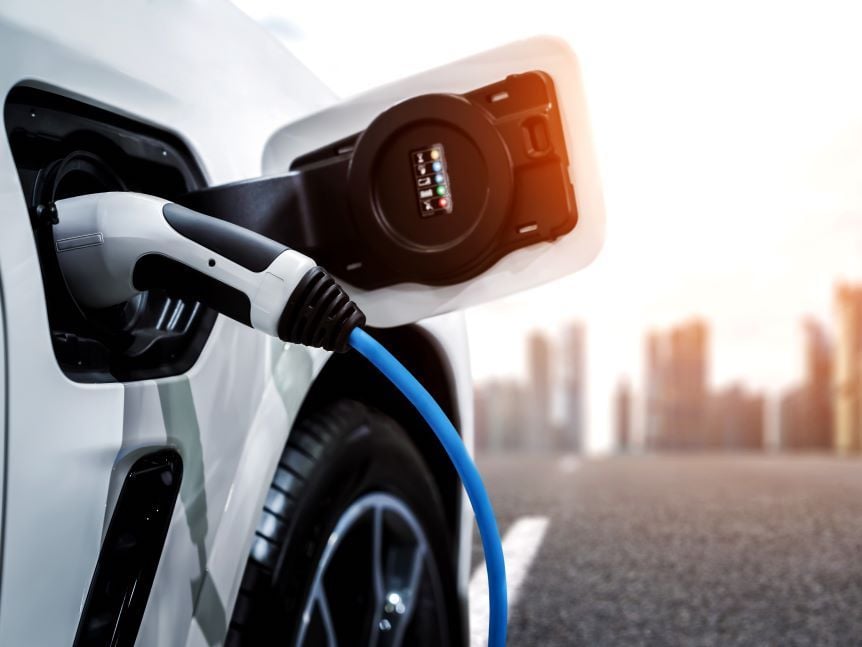As the COP28 meeting in Dubai concluded last month, those of us involved in efforts to fight climate change desperately looked for evidence that countries will finally take the climate crisis more seriously. Time is short. More than ever before, we need to close ranks and emphasize positive actions that will see a turnaround in carbon emissions for the first time, and a slowing of the creeping horror of global warming.
Members of the Canadian Association for the Club of Rome, or CACOR, have unanimously agreed that two of the key weapons against the climate crisis are:
- Rapid deployment of renewable energy resources (solar, wind, hydroelectric and geothermal energy) to replace fossil fuel energy.
- Replacement of transportation (cars, trucks, trains and eventually ships and airplanes) running with internal combustion engines, or ICEs, with electric vehicles, otherwise known as EVs.
Transportation throughout North America and most of the world produces more than 16 per cent of all carbon emissions. The number rises to 28 per cent in Canada and 29 per cent in the United States. Therefore, EVs would give the world’s fight against carbon emissions an early victory, while promoting the development of renewable electric energy and upgrading of all electric grids. The federal government has mandated that all new vehicles sold in Canada should be EVs by 2035 and is supporting clean electricity via its Clean Energy Regulations.
With widespread concern over climate change expressed at the recent COP28, we are hopeful that there will be a turnaround in attitudes towards renewables and EVs. Why is this so important?
First off, there is little time left in the fight against climate change. With the failure to hold global warming to 1.5 C now virtually assured, we must put every effort into keeping warming below the 2 C limit. Climate science estimates that this is the approximate level where a tipping point in our climate could occur, followed by more rapid warming that could put efforts to reverse the process permanently out of reach.
One of the most prominent American climate scientists, James Hansen, recently gave evidence that Earth’s current energy imbalance and greenhouse gases already in the atmosphere have enough momentum to surpass 5 C warming in this century, a condition that would cause hundreds of millions of deaths and a near-certain breakdown of civilization in this century.
An article published in The Tyee last month headlined “Poof Goes the Electric Car Dream,” by Andrew Nikiforuk, argues EVs hold out a false promise and don’t have a key role to play in doing all we can to respond to the climate crisis. He frames his many assertions by saying “civilization now pretends that extracting more and more metals to build heavier and larger vehicles whose electricity is largely powered by fossil fuels is somehow a measure of progress.”
In that statement and many more in the piece, he omits important context.
The impact of mining
Walking, biking and electrified public transit are undeniably better options than EVs, as Nikiforuk notes, but experience shows that consumers are not amenable to change unless that change provides better utility and/or lower cost. EVs provide that alternative.
Like every product, EVs have an environmental impact mostly limited to the construction phase. EVs are much better for the environment than internal combustion engine vehicles. EV technology is improving rapidly. The first EVs used NMC batteries, standing for nickel, manganese, cobalt. These were prone to fires and were associated with child labour in the Democratic Republic of Congo, but there are other sources of the materials, including Canada and Australia, where child labour is illegal.
One should not forget that there are many other uses for cobalt, including personal electronics batteries, metal alloys and, notably, desulphurization of crude oil. Why then is cobalt ethics a concern only in the context of EVs? Newer batteries are lithium, iron, phosphate, or LFP. Not only are they safer, but they also contain zero cobalt, while refining oil continues to use large amounts of cobalt.
Rare earths are also used extensively in ICE vehicles. Catalytic converters contain precious metals — that is why they are stolen so frequently. Meanwhile, some EVs use induction motors with no magnets, and new electric motors have been developed with permanent magnets that don't use rare earths.
When comparing mining for ICEs and EVs, one must consider that every tank of gasoline must be mined, processed and transported to be used just once. Mining for battery materials also happens once, but EV batteries last upwards of 10 years and are recyclable. ICE emissions are not recyclable. Oilsands tailings ponds now cover 300 square kilometres. Oil spills have a significant impact on the environment. As reported in Distilled, a fossil fuel economy requires 535 times more mining than a clean energy economy.
Affordability
EVs are not just “vehicles for the rich.” The average new car price in Canada now tops $53,000. There are many EV choices available with prices starting as low as $40,000 before rebates. Even the so-called “expensive” Teslas start at $53,990, which is close to the average for a new car in Canada, and that's before federal and provincial government rebates, which can be as high as $12,000.
As battery prices continue to fall, EV prices will follow and will soon reach parity with ICE vehicles.
Shares of the vehicle fleet and market
Only two per cent of all the existing light-duty vehicles are electric because it takes 12 to 15 years for all vehicles in the fleet to be replaced. The fleet percentage lags the year’s market share because the market share is for new sales in the current year. The market share number will increase substantially as the fleet is renewed over the next 15 years.
EV sales continue to increase, with Canada hitting 12.1 per cent in the third quarter of 2023 and rising rapidly. The worldwide figure of 14 per cent, as of 2022, also continues to increase rapidly.

Section 2 of the Rocky Mountain Institute's “The EV Revolution in Five Charts and Not Too Many Numbers” shows that the International Energy Agency has had a less than stellar track record of forecasting EV adoption. The IEA always underestimates the pace of change for EV, wind, solar and battery adoption. You can expect that EVs, wind, solar and batteries will account for a much larger share than what the IEA forecasts for 2050.
When Nikiforuk looks at Norway, where EV adoption is high, he points out that as more electric cars are adopted, the demand for oil comes “down to trucks.” Aren't we discussing EVs? Trucking is only starting to be electrified and light-duty vehicle fleets will take several more years to substantially electrify. And the pandemic rebound has somewhat muddied the numbers over the last few years. Still, fuel demand in Norway has fallen 10 per cent since 2017.
Manufacturers are interested in selling vehicles, not furthering the green revolution. If that does further the green revolution, we should rejoice.
Sources of energy for EVs
Nikiforuk talks about EVs’ impact on the electricity grid and the cleanliness of those grids as measured by GHG emissions. Using California and China as examples, he argues that EVs use dirtier electricity to charge their batteries.
Generally speaking, the grid has cleaner electricity outside of peak times. California is an exception because of its very high solar production during the day. Many utilities have programs that incentivize EV owners to charge during periods of excess supply. In California, that might be during the day. In all of Canada, that would be at night when the cleanest energy is produced. These programs will help soak up excess green energy that otherwise would go unused.
China's share of coal-based electricity continues to decline, with a decade low of 61 per cent in 2022. The proportion of renewable energy continues to increase rapidly while shattering records and reaching milestones as much as five years early. More clean energy means that driving an EV in China is getting cleaner every year.
Stating that dirty electricity powers EVs may be true in other parts of the world, but Canada has an 84 per cent emissions-free grid. Quebec, B.C. and Manitoba are almost entirely renewable-powered. EVs also produce fewer emissions even when powered by coal-based electricity. Electric grids are constantly being upgraded with renewable energy, further reducing emissions associated with charging EVs.
Fires, weight and tire pollution
Nikiforuk further critiques electric cars by raising the spectre of them catching fire, observing that they, like cars in general, are getting heavier, and citing pollution from tire debris. So let’s take a look at those points.
He notes the Norwegian ferry operator Havila Kystruten has banned EVs aboard its vessels — a policy that also, by the way, applies to hybrids. But the ban is misguided. Many studies have shown that EV fires are significantly less probable than ICE fires. Newer LFP batteries are even less prone to fires.
The issue of creeping vehicle weight reflects consumer preference for SUVs and pickup trucks. The trend towards heavier vehicles has been ongoing for many years, yet the Tyee article raises this issue only in the context of EVs. As explained in CleanTechnica, “While we recognize that large cars with bigger, more expensive batteries weigh more, this issue is not specific to electric cars.”
Increasing tire pollution is linked to heavier vehicles, not specifically EVs. Any excess tire pollution from EVs will be more than compensated for by reduced levels of nitrogen oxides and other harmful gases. Plug-in hybrid cars weigh more than EVs, yet the tire pollution problem has been framed as an EV issue.
Governments’ priorities, buyers’ motivations
As Nikiforuk notes, not all governments are serious about reducing emissions. If they were, we’d see a bigger push towards the electrification of transportation.
The main driver in Canada is the federal government, which has regulated incentives to produce clean energy while setting 2035 for the date all new vehicles will be EVs. But the federal government has little control over what provinces and municipalities can do to encourage active transportation and the necessary infrastructure to make that viable. In Ottawa, OC Transpo uses four litres of diesel to bring one passenger 100 kilometres. That's about the same as a single-passenger Prius. Transit needs to be electrified and the federal government is supporting that.
Nikiforuk contends that “owning an electric car has become a form of virtue signalling for the rich, who think their EV purchase earns them the right to fly mindlessly about the planet on the power of jet fuel.” This is speculative and irrelevant. Assuming EV prices continue to drop and used EVs become more plentiful, most people, not just the rich, will be able to afford them.
Proponents have never claimed buying an EV would save the world. That the IEA predicts that EVs will account for "10 per cent of energy consumption by 2050” is irrelevant, except maybe to confirm that their impact on the grid will be manageable. EVs are three to four times more efficient, so they use much less energy than ICE vehicles. The important progression here is to reduce GHGs.
Nikiforuk says, “The evidence suggests that electric cars really aren’t about lowering emissions but furthering artificial intelligence and automation.” What is the evidence? Any application of AI or automation would be applicable for both EVs and ICEs. A self-driving car doesn't need to be an EV. The authors of this article all drive EVs specifically to lower emissions.
EVs are not perfect, but they are an important part of rapidly decarbonizing our society to address climate change. Lost in this discussion is the fact that renewable clean energy is replacing fossil fuel energy worldwide. This means that EVs running today will actually become cleaner in future years as they recharge from cleaner electric energy sources.
Contributors to this article are CACOR members Geoff Strong, PhD, an atmospheric/climate research scientist in Cowichan Bay, B.C., and Art Hunter, PhD, designer of the renewable energy Manotick Microgrid, who lives in Ottawa. ![]()
Read more: Energy, Transportation, Environment

















Tyee Commenting Guidelines
Comments that violate guidelines risk being deleted, and violations may result in a temporary or permanent user ban. Maintain the spirit of good conversation to stay in the discussion and be patient with moderators. Comments are reviewed regularly but not in real time.
Do:
Do not: